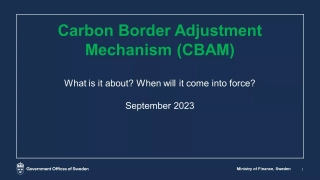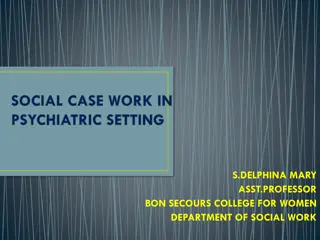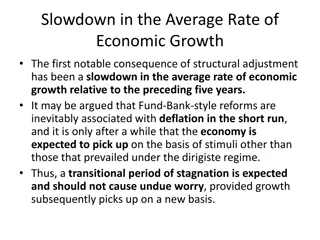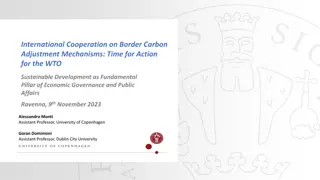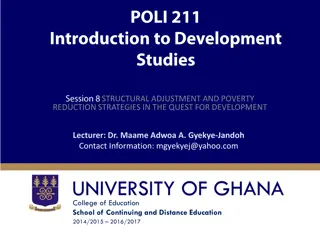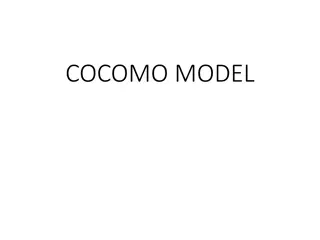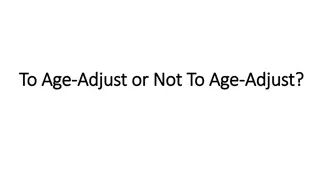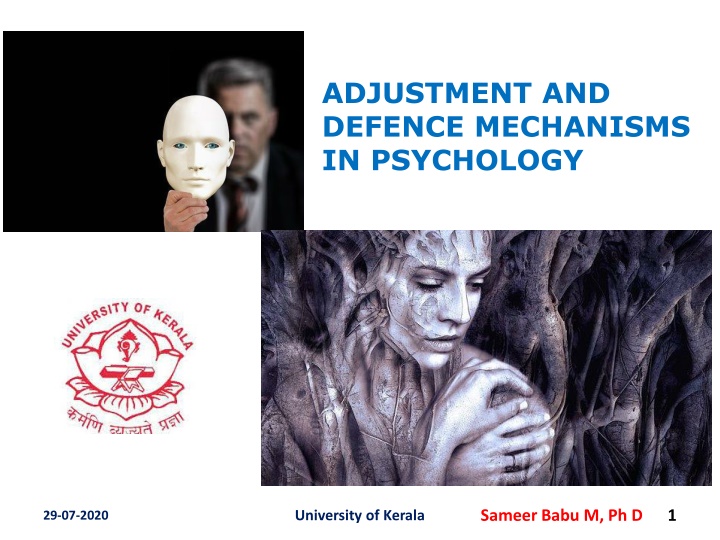
Adjustment Mechanisms and Defence in Psychology
Explore the concepts of adjustment mechanisms and defence mechanisms in psychology, including their significance, characteristics, and the role they play in maintaining a balanced personality. Learn about key theorists like Sigmund Freud and delve into practical examples to illustrate these psychological processes.
Download Presentation

Please find below an Image/Link to download the presentation.
The content on the website is provided AS IS for your information and personal use only. It may not be sold, licensed, or shared on other websites without obtaining consent from the author. If you encounter any issues during the download, it is possible that the publisher has removed the file from their server.
You are allowed to download the files provided on this website for personal or commercial use, subject to the condition that they are used lawfully. All files are the property of their respective owners.
The content on the website is provided AS IS for your information and personal use only. It may not be sold, licensed, or shared on other websites without obtaining consent from the author.
E N D
Presentation Transcript
ADJUSTMENT AND DEFENCE MECHANISMS IN PSYCHOLOGY Sameer Babu M, Ph D 1 University of Kerala 29-07-2020
Learning Outcomes The learner will be able to - Explain the meaning of adjustment mechanism - List out various adjustment/ defense mechanisms - Differentiate between sublimation and rationalization - Illustrate the displacement with practical example 19-03-2025 University of Kerala 2
Learning Outcomes The learner will be able to - Discuss the significance of adjustment mechanisms in maintaining a balanced personality - Lists out the characteristics of various mechanisms of adjustment, and - Develops a table based on unique characteristics of various defense mechanisms. 19-03-2025 University of Kerala 3
INTRODUCTION Adjustment mechanism can Adjustment is one of the behavioral processes by which humans and other animals maintain an equilibrium among their various needs. be defined as any habitual method of overcoming issues or blocks, and there by reaching goals, satisfying motives, minimizing or i.e., between their needs and the obstacles of their environments. removing frustrations and as a whole maintaining a A sequence of adjustment begins when a need is felt and ends when it is satisfied. state of balance called equilibrium. 19-03-2025 University of Kerala 4
Significance of Defence Mechanisms Sigmund Freud in his psychoanalytic theory mentions Defence mechanism as a method developed by the ego state to protect against anxiety. Ego is based on reality. 19-03-2025 University of Kerala 5
Characteristics - Defence Mechanisms are unconscious activities - They are not directly known to the person - They are considered to be normal, and only if exaggerated beyond limit they give rise to abnormality - Personality defences (coping techniques, defense mechanisms) are important things in that they strongly influence the ease with which people are able to form and maintain healthy relationships - Defence mechanisms are thought to safeguard the mind against feelings and thoughts that are too difficult for the conscious mind to deal with 19-03-2025 University of Kerala 6
Repression is a type of psychological mechanism that involves keeping certain thoughts, feelings, or urges out of conscious awareness. Repression The goal of this form of defence is to keep unacceptable desires or thoughts out of the conscious mind in order to prevent or minimize feelings of anxiety. This process involves pushing painful or disturbing thoughts into the unconscious in order to remain unaware of them. Eg: A child who has been abused in her childhood cannot recall the events (Cherry,2009; Anderson and Huddleston,2011; Corey,2009). 19-03-2025 University of Kerala 7
Displacement is a psychological defence mechanism in which a person redirects a negative emotions from its original source to a less threatening recipient that is less likely to come with repercussions. Displacement Displacement, like many other psychological defence mechanisms, often occurs subconsciously the person is not aware they are doing it. Unwanted impulses are shifted from the original source of our anxiety to something that poses less of a threat. Eg: A person who is angry with his boss comes at home and shouts at his partner (Corey, 2009; Cherry, 2020). In simple words, transferring thoughts and feelings towards one person or object onto another person or object. 19-03-2025 University of Kerala 8
Sublimation Sublimation is a type of defence mechanism, an unconscious psychological defense that reduces the anxiety that might result from unacceptable urges or harmful stimuli. In simple words, transforming unacceptable thoughts or needs into acceptable actions. Eg: A person may turn to boxing to deal with aggression. Corey, 2009; Cherry, 2020; Kumar. et.al, 2011). 19-03-2025 University of Kerala 9
Rationalization Rationalization is a defence mechanism that involves explaining an unacceptable behavior or feeling in a rational or logical manner, avoiding the true reasons for the behavior. Eg: I did poorly on the exam but the questions were so tricky (Corey,2009; Cherry,2020;). I learnt all well but the audience made me panic. 19-03-2025 University of Kerala 10
Projection Placing one s own unacceptable impulses on others Eg: in the case of blaming the question for low marks in the examination (Cherry,2020;Corey,2009). 19-03-2025 University of Kerala 11
Reaction formation Reaction formation reduces anxiety by taking up the opposite feeling, impulse, or behavior. An example of reaction formation would be treating someone you strongly dislike in an excessively friendly manner in order to hide your true feelings. (Corey,2009; Cherry,2020). 19-03-2025 University of Kerala 12
Denial Denial is probably one of the best-known defence mechanisms, used often to describe situations in which people seem unable to face reality or admit an obvious truth. Denial functions to protect the ego from things with which the individual cannot cope. Eg: An alcoholic fails to acknowledge that he is addicted to a drug. (Cherry,2020;MacDonald.et.al,2016;Malle.et.al,2014) 19-03-2025 University of Kerala 13
Regression Returning to a previous level of development. Regression functions as form of retreat, enabling a person to psychologically go back in time to a period when the person felt safer. When we are troubled or frightened, our behaviors often become more childish or primitive. Eg: A child may begin to suck their thumb again or wet the bed when they need to spend some time in the University of Kerala hospital (McLeod, 2019; Corey, 2009). 19-03-2025 14
Other Defence Mechanisms (Corey,2009;Cherry,2020) Acting Out: In this type of defence, the individual copes with stress by engaging in actions rather than acknowledging and bearing certain feelings. Avoidance: Refusing to deal with or encounter unpleasant objects or situations. Compensation: A deficit in a particular area is compensated using the skill in a different area as in the case of student who is poor in studies performs well in sport. Humor: Pointing out the funny or ironic aspects of a situation. Fantasy: It is the conjuring of an imagined scenario to replace a real one. It is done in all day dreaming. 19-03-2025 University of Kerala 15
References REFERENCES: 1. Anderson, M. C., & Huddleston, E. (2011). Towards a Cognitive and Neurobiological Model of Motivated Forgetting. Nebraska Symposium on Motivation, 53 120. doi:10.1007/978-1-4614- 1195-6_3 2. Burgo, J. why Do I Do That? Psychological Defence Mechanisms and the Hidden Ways They Shape Our Lives. Chapel Hill, NC: New Rise Press; 2012. 3. Cherry, K. (2019). Retrieved from Defence mechanism, very well mind.com 4. Cherry, K. (2020)a. Retrieved from 20 Common Defence Mechanisms Used for Anxiety, very well mind.com 5. Corey, G. (2009). Theory and Practice of Counseling and Psychotherapy (8th ed.). 6. Belmont, CA: Thomson Brooks/Cole. Kumar, S. S., Krishnan, V. T., Joseph, T., & Binoy, N.J. (2011). Introduction to psychology. Bina Publishers Private Limited. Malappuram. 19-03-2025 University of Kerala 16
References 1. Macdonald K., Thomas ML., & Sciolla, A. F. (2016). Minimization of Childhood Maltreatment Is Common and Consequential: Results from a Large, Multinational Sample Using the Childhood Trauma Questionnaire. PLoS ONE.;11(1):e0146058. doi:10.1371/journal.pone.0146058 2. Malle, B. F., Guglielmo, S., & Monroe, A. E. (2014). A Theory of Blame. Psychological Inquiry, 25(2), 147 186. doi:10.1080/1047840x.2014.877340 3. Mc Leod. (2019).Retrieved from Defence Mechanisms,Simple psychology.com. 4. Waqas A, Rehman A, Malik A, Muhammad U, Khan S, Mahmood N. (2015). Association of Ego Defence Mechanisms with Academic Performance, Anxiety and Depression in Medical Students: A Mixed Methods Study. Cureus,7(9):e337. doi:10.7759/cureus.337 19-03-2025 University of Kerala 17
Thank you for your time! Thank you for your time! Sameer Babu, Ph D Assistant Professor of Education University of Kerala sameer@keralauniversity.ac.in 19-03-2025 University of Kerala 18

